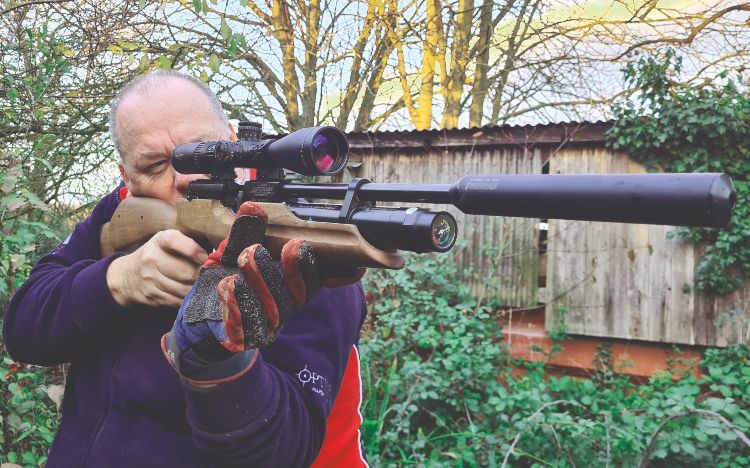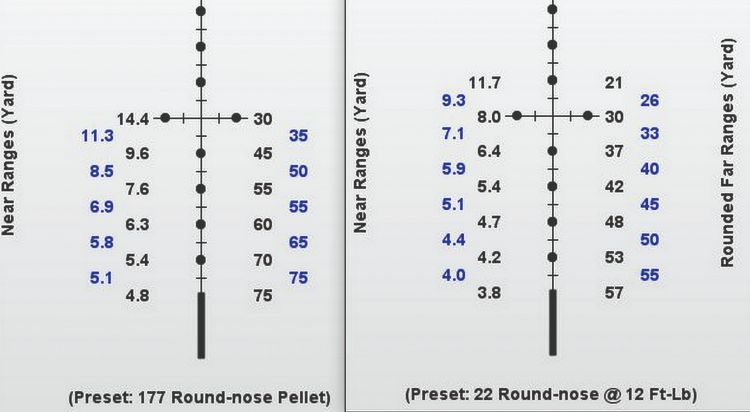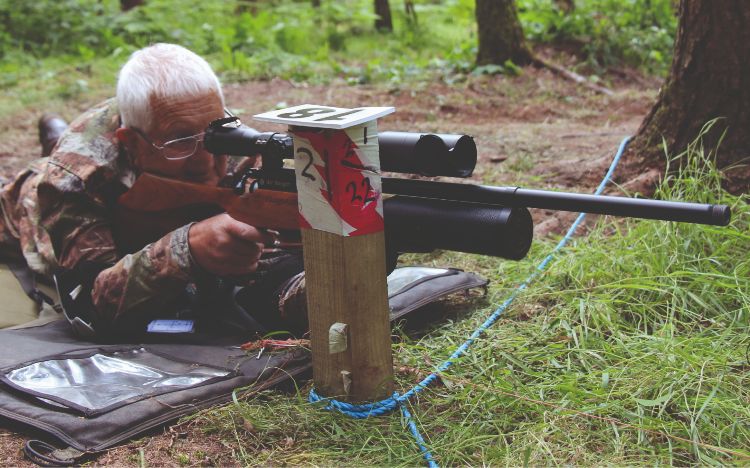Gary Chillingworth explains why the use of .22 air rifles in HFT are often seen as the poor relation in comparison to the more popular .177.
There has been a .22 class in the world of HFT for many years, but it was often dismissed as a secondary category behind the big two – PCP and spring – and that has always seemed very odd to me. If you walk into any gun shop, they will tell you that they sell as many .22s as they do .177s, and for those who hunt, the .22 is certainly the calibre of choice. In 2022, there was a definite increase in people shooting the .22 calibre, so the question is, why has the .22 not been popular in the world of target sports until now?
Well, in HFT you have to gauge everything by eye. You can’t use a rangefinder or use the scope’s parallax wheel to range the target and if you’re not good at judging distance, you will have a very bad day’s shooting. This is because pellets like the AA Field in .22 weigh around 16grn, so the trajectory is loopier than a bomb dropped from an Avro Lancaster in May 1943.
A pellet’s flight path is predominantly affected by the speed of the pellet; the faster the flight, the flatter the pellet will fly. A grain is the unit of measurement in which most pellets are weighed. 1 gram = 15.43 grains, and a standard .177 JSB Diablo pellet weighing 8.44grn will fly at around 770fps, whereas an AA Field .22 weighing 16.grn will top out at around 575fps. Both of these pellets will have the same muzzle energy at around 11.6 ft.lbs., but the difference in speeds makes for a very different flight path.
 .177 v .22 trajectory
.177 v .22 trajectory
The .177 will be almost flat from the point that the pellet leaves the barrel. It will climb to the top of its parabolic arc – a rise of about 2”, and will take about 12 yards to get there; it will stay at this position – give or take ½” – for about 30 yards, before dropping back toward the earth. In fact, looking at the rise and fall of the pellet, from 5 to 45 yards, the pellet travels a total of 3½” up and down.
So, if you are shooting at a target that has a 25mm kill zone and you zero your rifle at 35 yards, you will only require one aimpoint from 12 to 37 yards and you should get a good clean kill every time.
The .22, though, has a trajectory shaped more like a rainbow and because of the added weight – 16grn over a gram of lead – the pellet has a much steeper curve. From 5 to 45 yards, it has a total rise and drop of 5½” and only stays at the top of its arc for about 12 yards, and this is why the .177 has become the go-to pellet for HFT – it’s much easier to shoot.
 .177 v .22 kinetic energy
.177 v .22 kinetic energy
The .22 pellet is all about mass and stopping power. When you hit a target with a .22, it will impart more kinetic energy into the target than a .177 moving at the same speed, so if you are shooting rats, the sheer shock of a .22 pellet hitting the skull should be enough to kill the animal outright – the penetration after this shock is just a bonus. It has been shown that if you have a ‘splitter’ in HFT (half the pellet on the plate, half in the kill) then the target is more likely to fall with a .22 because half of a 16grn .22 hitting the kill is still the same weight as a .177, and it only takes around 2 ft.lbs. to knock over a target.
The added mass of a .22 also has an effect on the pellet in the wind. You would think that a big pellet with slab sides and moving at just above walking pace would be bucked all over the place by the wind, but in my testing in 10, 20 and a few 30mph gusting winds, the 16grn .22 didn’t take more or less wind then a .177 out to 40 yards. Between 40 and 50 yards it took about 1 to 2 pellet-width more, but essentially, they were all the same.
 The .22 HFT scene
The .22 HFT scene
Some great target shooters, like Dan Measures, are passionate about .22. Dan was taught to shoot by his dad, Alan, and he has used these skills to become one of the top .22 shooters in the country today. The HFT .22 scene is fairly small at the moment, but it’s growing every year. In the past, we’ve had shooters like Nick Byrne and Ed Tandi, Simon Howarth, Pete Muir, and now we have Graeme Cargan joining the fold; with this added competition and equipment, the scores are getting higher and higher, and it’s now not uncommon to see a .22 shooter in the mid-50s.
So, with all this in mind, should you consider shooting .22 in 2023? Well, if you are new to the sport and you need to learn the basics, the .177 will certainly be easier, the pellets are much cheaper and there’s a wider selection, but .22 are definitely becoming more abundant. We now have pellets like the JSB Express at 13 grains, that fly flatter then a regular .22, hit hard and are fun to shoot. They are very popular in both the target and hunting world – for hunters, they still create a very large hole – but if I were new to shooting targets, then I would probably go for .177 because the flatter trajectory and higher speed wins every time, and as multiple rifles costs lots of money, a good quality .177 does everything you could ever want. However, if I were not predominantly a target shooter, and hunting was my thing, then a good .22 PCP and a rangefinder would be my first choice.
Some shooters, like Graeme, use dedicated target rifles in .22. Graeme uses a Steyr LG110 and the level of accuracy he can get with this kit is astounding. These types of rifles are still quite rare, though, and the vast majority of guns that you will see in .22 are modified hunting rifles.
My.22 is an HW100KT that I purchased from the AirGun Centre in Rayleigh, a few years ago. It is fitted with an MTC Connect scope, and some of you might recognise this rifle. I am lucky to have two HW100s; a .177, and a .22. The .177, an HW100S is a basic stock, and the .22KT has all the bells and whistles; adjustable cheekpiece, butt pad, hamster … so I just swap the actions around, I nearly always use the KT stock and just decide which action to place in it. Saves a bunch of money.
I’m going to have a go at shooting HFT in .22 next weekend. It’s Round 3 of the Southern Hunters at the Oaks, so I shall report back on my humiliation. I’m going to use the JSB Jumbo RS 13.43grn pellets, and if I can get within five points of the big boys, I will be very happy!